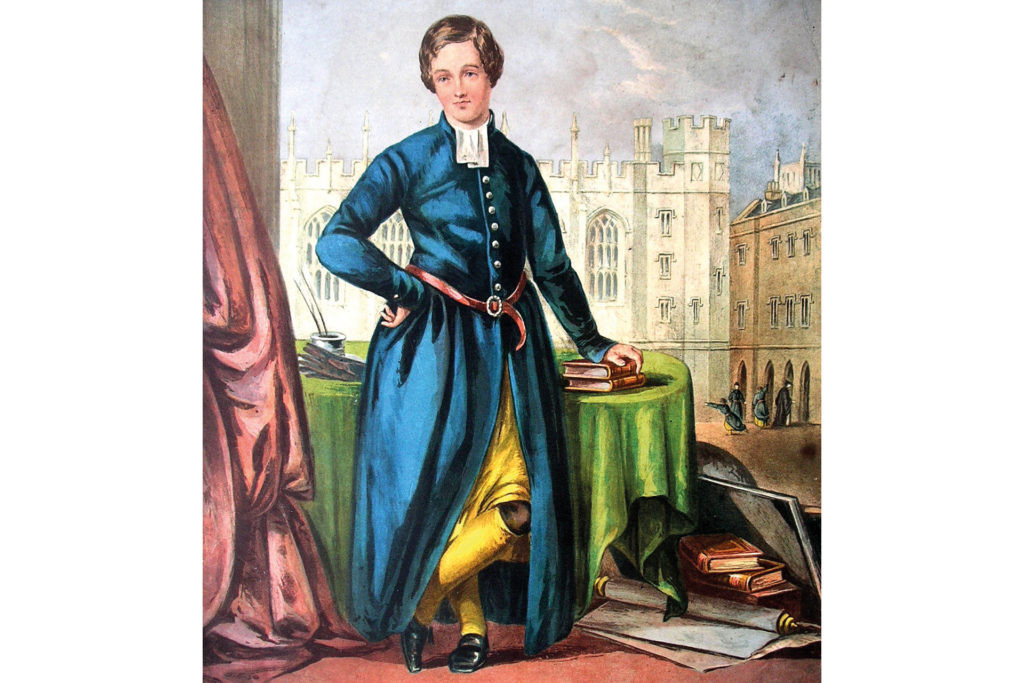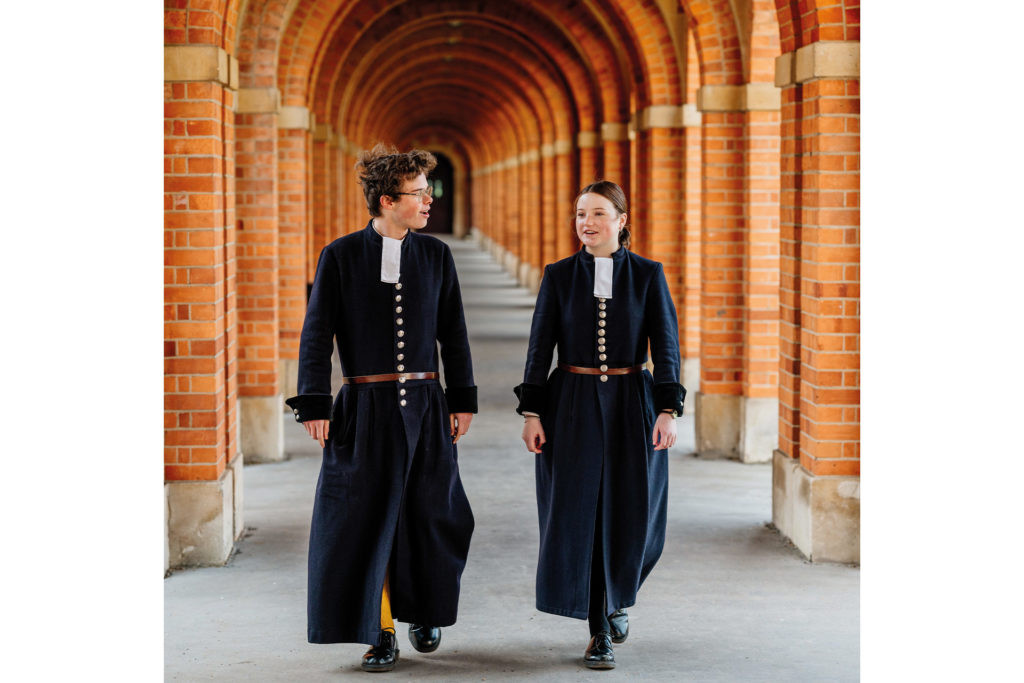From the hallowed halls of historic institutions to the rule-free zones of progressive schools, the approach to school uniform speaks volumes about a school’s identity. As a young student observing prize day at my brother’s prep school, the allure of a “proper” uniform was undeniable. The crisp sky-blue blazers, the vibrant ties, and the coveted prefect badges—it was a masterclass in branding. My own school’s drab attire felt utterly inadequate in comparison. This early fascination with the symbolic power of school uniforms has stayed with me, highlighting how these garments are far more than just clothing; they are potent emblems of school ethos, tradition, and aspiration. The debate around school uniforms – whether to embrace tradition or champion individuality – continues to shape the landscape of education, reflecting diverse philosophies on discipline, identity, and even “dressing to impress” in the academic world.
The Historical Power of School Uniforms: Branding and Belonging
For many, the quintessential school uniform evokes images from classic school stories – blazers, striped caps, boaters for boys, and gymslips for girls, often in striking colors. This idealized vision stems from a long history of uniforms serving not just as practical garments but as powerful tools for school branding and fostering a sense of belonging. Institutions like Eton and Harrow, with their uniforms dating back to the early 19th century, exemplify this tradition. The iconic photograph from the 1937 Eton-Harrow match, featuring Harrovians in immaculate striped trousers, hats, and canes, perfectly encapsulates the image of elite British schooling. While Eton eventually relaxed its top hat rule, the core uniform remains a recognizable symbol of its heritage. These ornate, traditional uniforms, though sometimes perceived as anachronistic, cultivate a deep sense of pride and collective identity among students. They visually define the “tone” of the school, projecting an image of history, discipline, and prestige.
Even older than these renowned examples is the uniform of Red Maids’ High School in Bristol, Britain’s oldest girls’ school. Founded in 1634, the school’s very name originates from its uniform, stipulated by founder John Whitson that girls should be “apparelled in red cloth.” Today, Redmaids’ High still incorporates this historical red into its uniform, most notably in capes and blazers worn during the annual Founder’s Day procession. While the traditional red capes and bonnets are now ceremonial, worn by a select few, they serve as a potent reminder of the school’s long and distinctive history. The sea of red blazers in the procession visually reinforces the school’s enduring identity and connection to its past.
 Then and now: pupils at Christ’s Hospital School
Then and now: pupils at Christ’s Hospital School
 Christ's Hospital School Uniform Then and Now
Christ's Hospital School Uniform Then and Now
Perhaps the most venerable and recognizable school uniform belongs to Christ’s Hospital. Largely unchanged for 470 years, this “picturesque rig-out” – featuring a long blue “housey” coat, knee breeches, yellow socks, and white neckbands – is possibly the world’s oldest. Originally designed to clothe and unify “fatherless and poor children” cared for by the City of London, the uniform was practical in its origins. The blue and yellow dyes were chosen for their affordability, and the uniform served to distinguish these children. Over time, it has evolved into a powerful symbol of the school’s charitable mission and unique identity. The buttons depicting founder King Edward VI, and the silver buttons and velvet cuffs awarded to top students, further enhance the uniform’s symbolic value. Even today, Christ’s Hospital provides the uniform free to all 900 pupils, reinforcing its commitment to inclusivity and accessibility. The uniform also grants students a tangible perk – free entry to the Tower of London, a testament to the school’s historical London links.
Uniforms as a Statement: Pride, Responsibility, and Identity
Beyond branding and historical significance, school uniforms play a crucial role in shaping student identity and behavior. For students at schools with distinctive uniforms, like Christ’s Hospital, the uniform becomes a source of pride. Luke Pullen, a student leader at Christ’s Hospital, notes that while some outside of school might initially tease about the uniform, many are genuinely fascinated by it. He emphasizes that the uniform fosters a sense of belonging and shared identity within the school, regardless of background. Wearing the uniform becomes synonymous with carrying the school’s history and tradition.
This strong visual identity also extends to a sense of responsibility. Students in recognizable uniforms understand that they are representing their school in public. This awareness often encourages them to behave with decorum, upholding the school’s reputation. Hurlingham School, with its distinctive light blue blazers and caps since 1947, provides a clear example of this. Headmaster Simon Gould proudly states that the “striking” Hurlingham blue uniform gives the school a strong identity and that it is often the first thing people associate with the school. He believes the uniform fosters a sense of community and responsibility, encouraging students to “behave better” as they are instantly recognizable as Hurlingham students.
 Christ's Hospital School Uniform Then and Now
Christ's Hospital School Uniform Then and Now
Modern Uniform Evolution: Balancing Tradition and Contemporary Style
While tradition remains a cornerstone of many school uniforms, there is also a constant evolution to ensure relevance and appeal to contemporary students. Rugby School’s recent uniform update exemplifies this process of modernization while respecting heritage. The school undertook extensive consultations with staff, students, and alumni to revamp its uniform. This involved revisiting every aspect, from the shade of blue to the fabric. The boys’ uniform, which had transitioned from a durable tweed jacket to a less favored polyester version, was updated to a high-quality, paler blue tweed. The girls’ uniform, initially introduced in the 1990s with Laura Ashley-style flannel skirts, was also refined. Deputy Head Lara Hampton highlights the careful consideration given to the changes, noting that the new blue was chosen to project “life and energy” in contrast to a “drab” grey. Interestingly, the girls advocated for retaining the ankle-length skirt, appreciating its demureness and practicality. This example shows how schools can modernize uniforms to meet contemporary tastes and practical needs while still maintaining a sense of tradition and school identity.
The No-Uniform Debate: Individuality vs. Conformity
In contrast to schools that embrace uniform tradition, progressive institutions like St Chris and Bedales champion a no-uniform policy. For these schools, the absence of a uniform is a deliberate statement of their ethos, prioritizing individuality and freedom of expression. At St Chris, students can wear almost anything, with minimal restrictions. Student Soonu Dilke argues that this freedom reflects the school’s progressive values, emphasizing that equality can be achieved through comfort and individual expression rather than uniform dress. The diverse attire at St Chris, ranging from tracksuits to suits, reflects this philosophy. The only real guideline is to be respectful, avoiding offensive or militaristic clothing. For students accustomed to this freedom, non-uniform days at traditional schools are seen as an unnecessary source of stress.
Bedales School, founded on progressive principles in 1893, similarly maintains a no-uniform policy. Head of Bedales Schools Will Goldsmith emphasizes that this approach, along with addressing staff by first names, is part of a culture that “values the individual” and fosters “mutual respect” between staff and students. He argues that in an era that demands creativity and individuality, traditional uniforms are “irrelevant and counter-productive.” Goldsmith suggests that the modern workplace no longer necessitates conformity in dress, and schools clinging to traditional uniforms risk appearing “anachronistic.” This perspective champions the idea that fostering individuality and self-expression is more valuable than enforcing uniformity.
The Enduring Appeal of School Uniforms: Discipline and Work Ethic
Despite the arguments for no-uniform policies, the enduring popularity of school uniforms suggests continued value in their function and symbolism. Lara Hampton from Rugby School counters the individuality argument by highlighting the practical benefits of uniforms in promoting social equity. In diverse student bodies, uniforms can reduce the pressure of “keeping up with the Joneses” in terms of fashion and brands. She argues that uniforms instill a sense of discipline and prepare students for a “work mode.” While students at Rugby enjoy non-uniform days, they recognize that uniforms foster a more focused and disciplined approach to schoolwork. Hampton believes that a “smart, attractive uniform” sets the tone for the school day and instills a readiness for both academic pursuits and future professional life.
In conclusion, the debate surrounding school uniforms reflects fundamental differences in educational philosophy. Whether embracing the historical branding and disciplinary benefits of traditional uniforms or championing individuality through no-uniform policies, a school’s stance on dress code is a powerful declaration of its ethos. From “dressing to impress” with time-honored blazers and ties to expressing individuality through personal style, school uniforms, or the lack thereof, continue to play a significant role in shaping the educational experience and defining school identity.

